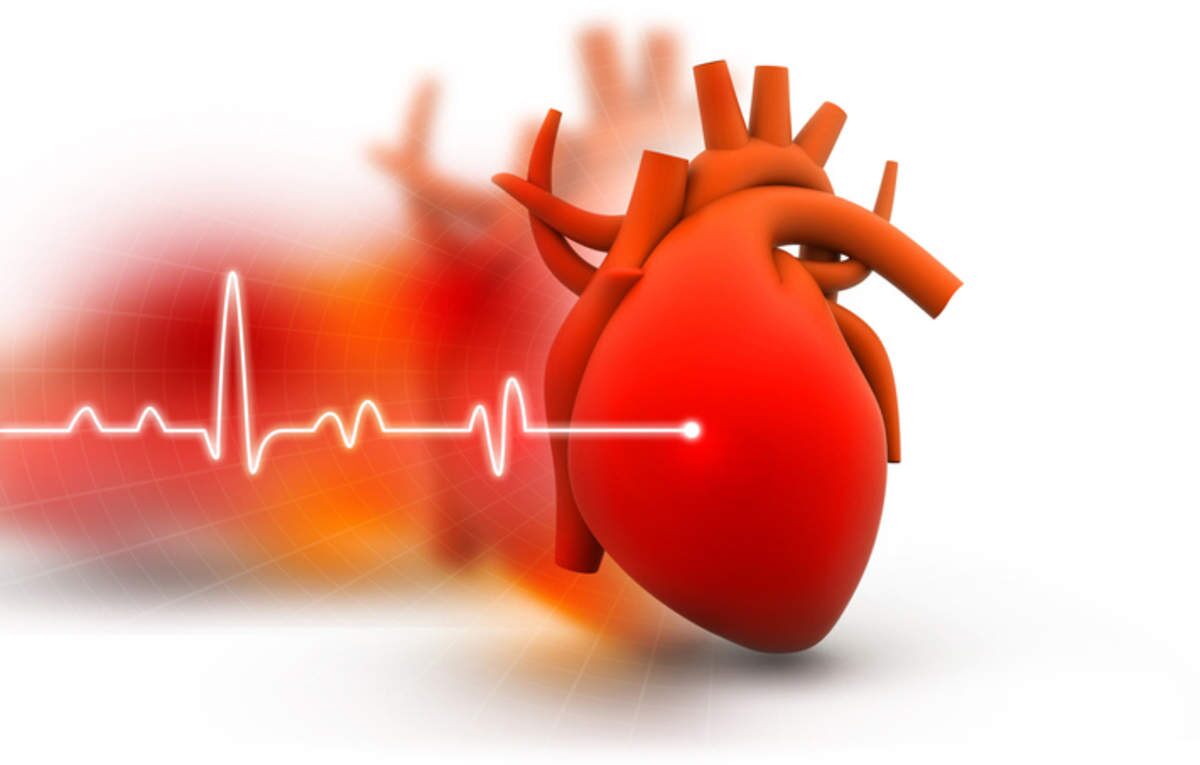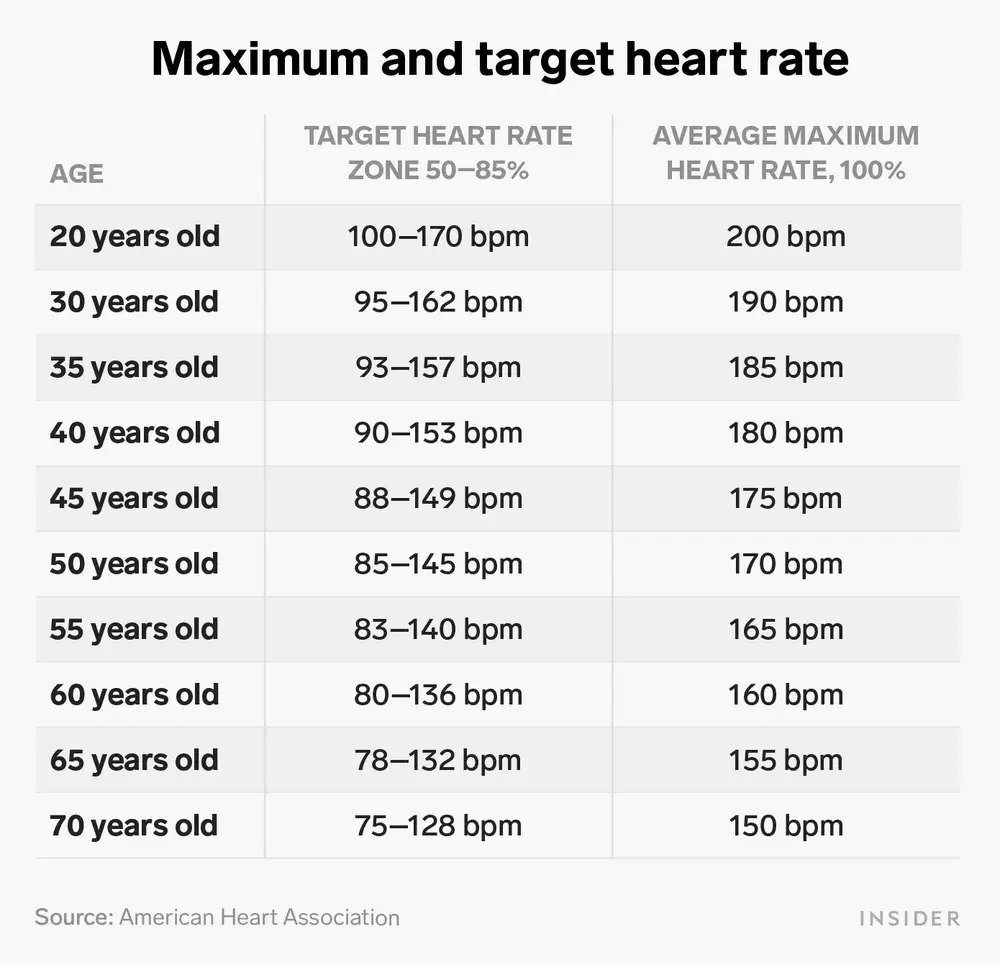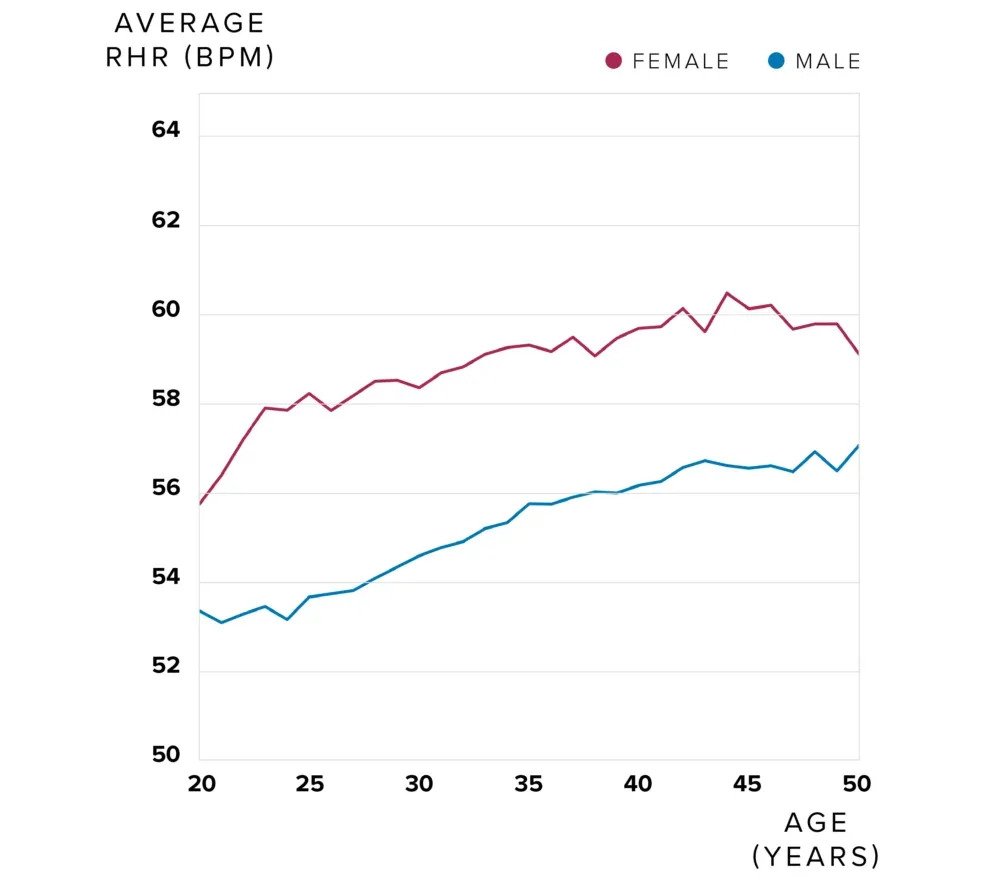What Is A Normal Heart Rate? - Pulsating Vitality
In the symphony of health, understanding what is a normal heart rate orchestrates a melody of well-being, guiding us through the nuanced cadence of our cardiovascular journey.
Author:Katharine TateReviewer:Karan EmeryOct 05, 202321.6K Shares296.5K Views

In the intricate tapestry of human health, few parameters are as vital and revealing as the heart rate. A rhythmic cadence echoing the efficiency of the cardiovascular system, the normal heart rate is a crucial indicator of overall well-being. So, what is a normal heart rate?
From the rapid beats of infancy to the nuanced fluctuations in adulthood, understanding what is a normal heart rate is a journey through the various stages of life.
This exploration not only demystifies the numerical range associated with heart rate but unveils the dynamic interplay between age, lifestyle, and health, offering insights that empower individuals to take charge of their cardiovascular well-being.
Defining Normal Heart Rate
The heart rate, measured in beats per minute (bpm), represents the number of times the heart contracts in one minute. The normal range for adults typically falls between 60 and 100 bpm at rest. However, it's essential to recognize that individual variations exist, and what might be normal for one person could differ for another.
Factors Influencing Heart Rate
Several factors can influence heart rate, both transiently and chronically. Understanding these variables is crucial for interpreting heart rate measurements accurately.
- Age -Age plays a significant role in determining the normal heart rate. Infants and young children tend to have higher resting heart rates compared to adults.
- Fitness Level -Individuals who engage in regular physical activity often have lower resting heart rates. This is a reflection of the heart's efficiency in pumping blood.
- Stress and Emotions -Emotional states such as stress, anxiety, or excitement can cause a temporary increase in heart rate. This is part of the body's "fight or flight" response.
- Medications and Substances -Certain medications and substances like caffeine or nicotine can impact heart rate. It's essential to consider these factors when assessing normalcy.
- Body Temperature -Fever or extreme temperatures can affect heart rate. During fever, the heart rate usually increases as the body works harder to regulate temperature.
Normal Heart Rate Variations
While the average resting heart rate for adults is between 60 and 100 bpm, athletes and individuals in peak physical condition might have resting heart rates below 60 bpm. This is often a sign of cardiovascular efficiency and is not necessarily a cause for concern.
Conversely, a consistently high resting heart rate might indicate an underlying health issue. Persistent tachycardia (resting heart rate above 100 bpm) may warrant medical attention and further investigation.
The Significance Of Normal Heart Rate
Maintaining a normal heart rate is crucial for overall health and well-being. The heart serves as the body's primary pump, delivering oxygen and nutrients to various organs and tissues. A steady and controlled heart rate ensures efficient blood circulation, supporting the body's metabolic needs.
Moreover, deviations from the normal heart rate range can be indicative of cardiovascular conditions. Bradycardia (resting heart rate below 60 bpm) or tachycardia can be symptoms of underlying heart problems and may require medical evaluation.
The Dynamic Nature Of Heart Rate - Unraveling The Complexities
Beyond the simplicity of a single number representing heart rate lies a fascinating concept – heart rate variability (HRV). HRV refers to the variation in time between successive heartbeats.
Rather than a steady, metronomic beat, a healthy heart displays slight variations in the time interval between beats. This variability is a sign of the heart's adaptability to different situations and is associated with better overall cardiovascular health.
Understanding Normal Heart Rate By Age - RHR
Resting heart rate (RHR) serves as a vital indicator of cardiovascular health, and its interpretation varies across different age groups.
While the general guideline for a normal resting heart rate is between 60 and 100 bpm for adults, it's important to note variations based on age. For infants, a normal heart rate can range from 100 to 160 bpm. As children grow, the heart rate gradually decreases. By adolescence, the average resting heart rate is closer to that of adults.
In this exploration, we delve into the nuanced landscape of resting heart rate, unraveling the intricacies that define what is considered normal at various stages of life.
Infancy And Childhood - The Symphony Of Rapid Beats
In the early stages of life, the heart is a diligent conductor orchestrating a symphony of rapid beats. A newborn's heart rate can range from 100 to 160 beats per minute (bpm). As children grow, the heart rate gradually decreases, with an average resting heart rate for a child around 90 to 110 bpm.
During adolescence, the heart rate continues to stabilize, approaching the typical adult range. The transition from childhood to adulthood is marked by both hormonal changes and physical development, influencing the cardiovascular system's maturity.
Adulthood - The Benchmark For Health
For adults, the standard resting heart rate typically falls between 60 and 100 bpm. However, this range is a general guideline, and individual variations exist. Factors such as fitness level, stress, and overall health can influence an adult's resting heart rate.
Regular physical activity tends to lower resting heart rate, a testament to the heart's efficiency in pumping blood. Well-conditioned athletes may even boast resting heart rates below 60 bpm, reflecting their cardiovascular prowess.
Maturity And Aging - The Graceful Deceleration
As individuals enter their golden years, a gradual deceleration of resting heart rate is commonly observed. This slowing down is often a natural consequence of aging and is usually not a cause for concern. It's not uncommon for healthy seniors to have resting heart rates below the average adult range, hovering around 50 to 60 bpm.
However, it's crucial to differentiate between age-related changes and potential cardiovascular issues. While a lower resting heart rate in the elderly is generally accepted, a sudden and unexplained drop may warrant medical attention.
Pregnancy - The Dynamic Heartbeat For Two
Pregnancy introduces a dynamic element to the resting heart rate narrative. As the body works to support both the mother and the growing fetus, an increase in resting heart rate is expected.
This elevation, particularly in the later stages of pregnancy, is a normal physiological response to the increased workload on the heart.
Monitoring resting heart rate during pregnancy can offer insights into cardiovascular adjustments. However, any drastic or sudden changes should be communicated to healthcare providers for a comprehensive assessment.
The Influence Of Lifestyle Factors
Beyond age, lifestyle factors play a pivotal role in determining resting heart rate. Sedentary habits, stress, and poor sleep can contribute to elevations in resting heart rate across all age groups. Conversely, a physically active lifestyle, stress management, and adequate sleep can positively impact heart rate, promoting cardiovascular health.
Monitoring Resting Heart Rate - A Window To Health
Regular monitoring of resting heart rate provides a valuable window into cardiovascular well-being. Modern technology, including fitness trackers and smartwatches, facilitates easy and continuous monitoring, empowering individuals to take an active role in their health.
Understanding the normal range for different age groups allows for more accurate interpretation of resting heart rate data. It also enables healthcare professionals to tailor recommendations based on age-specific considerations, promoting targeted interventions for optimal cardiovascular health.
Heart Rate And Exercise - Unveiling The Athletic Heart
Athletes, especially those engaged in endurance sports, often exhibit remarkable control over their heart rates. The athletic heart is characterized by a lower resting heart rate, a larger stroke volume (the amount of blood pumped per heartbeat), and efficient oxygen utilization. This adaptation results from the heart's response to regular, intense physical training.
However, extreme endurance training can sometimes lead to bradycardia, a condition where the resting heart rate drops below normal levels. While this is generally harmless in well-trained athletes, it underscores the importance of individualized health assessments.
- Lower Resting Heart Rate -One of the hallmark features of the athletic heart is a lower resting heart rate. Regular physical training improves the heart's efficiency, allowing it to pump a greater volume of blood with each beat. As a result, the heart doesn't need to work as hard at rest, leading to a lower resting heart rate, often below the average adult range of 60 to 100 beats per minute.
- Increased Stroke Volume -The heart's stroke volume, or the amount of blood pumped with each contraction, is a critical factor in cardiovascular efficiency. Athletes typically exhibit an increased stroke volume, allowing their hearts to pump more blood with each beat. This adaptation ensures that the muscles receive an optimal supply of oxygen and nutrients during exercise.
- Efficient Oxygen Utilization-The athletic heart becomes adept at extracting oxygen from the blood and delivering it to the muscles. This efficiency is crucial for sustained physical activity, especially during endurance sports.
Heart Rate During Exercise - The Symphony Intensifies
As the intensity of exercise increases, so does the heart rate. This heightened rate is a direct response to the body's increased demand for oxygen and nutrients to support the working muscles.
- Target Heart Rate Zones -Understanding target heart rate zones is crucial for athletes aiming to optimize their training. These zones, often expressed as a percentage of maximum heart rate, help individuals tailor their exercise intensity for specific fitness goals, whether it's aerobic conditioning, fat burning, or anaerobic performance.
- Recovery Heart Rate -The speed at which the heart rate returns to baseline after exercise is an important indicator of cardiovascular fitness. A quicker recovery heart rate suggests a well-conditioned cardiovascular system, reflecting efficient oxygen delivery and waste removal.
Potential Challenges - Striking A Balance
While the athletic heart demonstrates impressive adaptations, there are potential challenges to consider. Intense, prolonged exercise, especially in endurance sports, can lead to issues like atrial fibrillation or bradycardia. Striking a balance between pushing the limits and allowing for adequate recovery is essential to maintain cardiovascular health.
Clinical Implications Of Abnormal Heart Rates
While a high or low heart rate can often be attributed to lifestyle factors, it's crucial to recognize when these variations may signal underlying health issues.
Persistent tachycardia or bradycardia, especially when accompanied by symptoms such as dizziness, shortness of breath, or chest pain, should prompt a visit to a healthcare professional.
Diagnostic tools such as electrocardiograms (ECGs or EKGs) provide a more in-depth look at the heart's electrical activity, aiding in the identification of irregularities. Early detection and intervention are vital for addressing potential cardiovascular concerns.
Heart Rate And Mental Health
The intricate connection between the mind and the heart is evident in the influence of emotions on heart rate. Stress, anxiety, and emotional upheavals can cause a surge in heart rate as the body prepares for a "fight or flight" response. Chronic stress is linked to long-term increases in heart rate, emphasizing the holistic nature of cardiovascular health.
Incorporating mindfulness practices, such as meditation and relaxation techniques, can contribute to better heart rate management and overall mental well-being.
Heart Rate And Sleep - The Nighttime Rhythms
While much attention is given to heart rate during waking hours, the nighttime offers a unique perspective on cardiovascular health. During sleep, the body undergoes crucial repair and regeneration processes, and the heart rate follows a distinctive pattern.
A normal adult heart rate during deep sleep can drop to as low as 40 bpm. This nocturnal bradycardia is a natural response to the body's decreased metabolic demands during rest. Monitoring heart rate during sleep can provide insights into sleep quality and potential issues such as sleep apnea, a condition characterized by pauses in breathing during sleep.
Special Considerations For Medical Conditions
Certain medical conditions can influence heart rate, necessitating tailored considerations. For individuals with cardiovascular diseases, diabetes, or thyroid disorders, managing heart rate becomes a critical aspect of overall health.
For example, hyperthyroidism, a condition where the thyroid gland is overactive, can lead to an elevated resting heart rate.
Conversely, hypothyroidism, characterized by an underactive thyroid, may result in bradycardia. Understanding these connections allows for targeted interventions and improved management of underlying health conditions.
Tips For Maintaining A Healthy Heart Rate
- Regular Exercise -Engaging in regular physical activity strengthens the heart and helps maintain a healthy heart rate. Aim for at least 150 minutes of moderate-intensity exercise per week.
- Healthy Diet -A balanced and nutritious diet contributes to overall cardiovascular health. Limiting the intake of processed foods and excessive salt can positively impact heart rate.
- Stress Management -Incorporating stress-reducing practices such as meditation, yoga, or deep breathing exercises can help keep stress-related increases in heart rate in check.
- Adequate Hydration -Dehydration can lead to an increase in heart rate. Ensure you stay well-hydrated, especially during physical activity.
Empowering Individuals Through Knowledge
In the grand tapestry of health, understanding heart rate is a thread woven into the fabric of well-being. From the nuances of daytime variations to the rhythmic dance of the heart during sleep, each aspect contributes to the comprehensive story of cardiovascular health.
As technology continues to democratize health information, individuals are empowered to actively participate in their health journeys. The heart, with its rhythmic cadence, becomes a beacon guiding us towards choices that nurture not only cardiovascular health but the vitality of life itself.
FAQs
Can Abnormal Heart Rates Indicate Health Issues?
Yes, consistently high or low heart rates, especially when accompanied by symptoms like dizziness or chest pain, may indicate underlying health concerns and should be evaluated by a healthcare professional.
How Does Caffeine Consumption Affect Heart Rate?
Caffeine is a stimulant that can temporarily increase heart rate. However, the effect varies among individuals, and regular consumers may develop some tolerance.
What Role Does Genetics Play In Determining Heart Rate?
Genetics can influence an individual's baseline heart rate. Family history of heart conditions may also impact cardiovascular health and heart rate tendencies.
Are There Gender Differences In Normal Heart Rates?
Generally, there are minimal gender differences in normal heart rates. However, hormonal changes, as seen during pregnancy, can temporarily affect heart rate.
How Does Emotional Stress Impact Heart Rate?
Emotional stress triggers the release of stress hormones, leading to an increase in heart rate as part of the body's "fight or flight" response.
Conclusion
Beyond the numerical range lies a symphony of factors, age, fitness, emotional well-being, and lifestyle choices, all influencing the rhythmic dance of the heart. Armed with the knowledge of what is a normal heart rate, individuals are better equipped to navigate their health landscapes.
Whether it's monitoring heart rate during exercise, understanding age-related variations, or recognizing the influence of emotions, this knowledge empowers us to harmonize our heart's rhythm with the symphony of a healthy life. In embracing this understanding, we embark on a journey towards cardiovascular well-being, ensuring that the heartbeat of life resonates with vitality and harmony.
Jump to
Defining Normal Heart Rate
Factors Influencing Heart Rate
Normal Heart Rate Variations
The Significance Of Normal Heart Rate
The Dynamic Nature Of Heart Rate - Unraveling The Complexities
Understanding Normal Heart Rate By Age - RHR
Heart Rate And Exercise - Unveiling The Athletic Heart
Clinical Implications Of Abnormal Heart Rates
Heart Rate And Mental Health
Heart Rate And Sleep - The Nighttime Rhythms
Special Considerations For Medical Conditions
Tips For Maintaining A Healthy Heart Rate
Empowering Individuals Through Knowledge
FAQs
Conclusion

Katharine Tate
Author

Karan Emery
Reviewer
Latest Articles
Popular Articles

